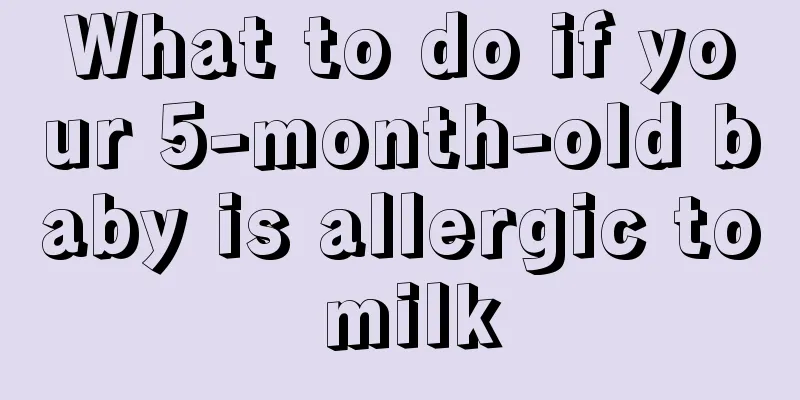Why does a four-year-old child have leg pain?

|
For children, because they do not have a good understanding of various physiological knowledge, they cannot recognize well when some diseases or pains occur. At this time, the role played by parents is very important. Because many diseases are caused by parental neglect. So, what is going on when a four-year-old child has leg pain? This is most likely due to the following reasons: trauma Childhood is a period when accidental injuries are very likely to occur, because children at this stage are particularly active but have poor self-protection abilities, so bumps and bruises are inevitable while playing. Sometimes they may accidentally injure the knee and hip ligaments, or break bones from falling. If the leg pain is caused by trauma, we can often see bruising, swelling, tenderness, etc. in the painful area. In the case of fractures, there will also be symptoms of joint movement disorders. X-ray examinations can help with diagnosis. Hip synovitis Hip synovitis, also known as transient synovitis, is a common orthopedic disease that occurs in children aged 3-7 years old. The cause of the disease is still unclear. It may be because the femoral head of young children is not yet fully developed and the joint capsule is loose. When the child jumps violently or excessively, the joint capsule is pulled or squeezed, resulting in synovial edema. In addition, it is also related to factors such as infection. Children often have a history of upper respiratory tract infection 1-2 weeks before the onset of the disease. The main clinical manifestations are hip or knee pain. Children may feel tenderness when the hip joint area is pressed deeply, and the pain is more obvious when the hip joint is flexed and abducted. Children with more serious conditions may refuse to walk or walk with a limp. Once hip synovitis is confirmed through X-ray and related tests, timely and effective treatment should be carried out. Otherwise, it may develop into serious consequences such as avascular necrosis of the femoral head. At present, the treatment for pediatric hip synovitis mainly involves bed rest and anti-inflammatory treatment under the guidance of a doctor. If necessary, traction therapy is also required for the patient to relieve muscle spasms and reduce pain. Abnormal bone development Some babies have skeletal and joint structure dysplasia such as clubfoot, hallux valgus, and inversion. When they learn to stand and walk, the joints and ligaments of the lower limbs are subjected to unbalanced force and the muscles remain tense during long-term activities and weight-bearing, which may cause leg pain over time. |
>>: Baby sleeping with cold hands
Recommend
What are the benefits of drinking water early in the morning for young children?
As for children, we all know that their bodies ar...
How to deal with nosebleeds in children
It is normal for children to have nosebleeds nowa...
What should I do if my child has prostate hyperplasia?
Prostatic hyperplasia is a relatively common male...
What are the benefits of hula hoop gymnastics for children
Babies are the apple of the eyes of the whole fam...
Cultivation of children's behavioral habits
The younger the child is, the more difficult it i...
Does my baby not eat normally mean he is zinc deficient?
Many parents are troubled by their children not e...
Is mumps serious in children?
Because mumps does not cause too many symptoms in...
What to do if your 4-month-old baby has enteritis
If a four-month-old baby gets enteritis, the harm...
Does baldness on the back of the head necessarily mean calcium deficiency?
Many parents may think that their children’s bald...
What should I do if my two-month-old child is constipated?
Children need to defecate every day. If they do n...
How many months does it take for a newborn to start teething?
Having a child in the family really adds a lot of...
How many times a day is normal for a newborn baby to poop?
Newborns begin to slowly adapt to the external en...
What causes green stools in three-month-old babies?
Green stools are a common symptom of disease in t...
Why do infants and young children speak late?
The birth of a baby brings joy to people because ...
Your baby's back muscle tension is high, know the symptoms first
Parents of their babies are extremely concerned a...









